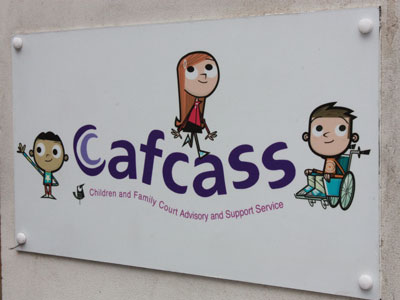
The State of Supervision 2014 report is sponsored by:

Editorial content is independent of sponsor
By Christine Banim, national service director, Cafcass
 Cafcass historically suffered from the typical problems associated with traditional social work supervision.
Cafcass historically suffered from the typical problems associated with traditional social work supervision.
An Ofsted report from 2009 for the South East of England found that from a supervision completion target of 95% per quarter, just 22% of staff had actually had one.
Furthermore, the supervisions were of a low quality, not accounting for staff wellbeing or development and with too much time spent on cases pre-selected by practitioners.
We had to change our approach to supervisions for benefit of both our staff and, most importantly, the children we represent.
In 2012 we introduced a new approach to supervision: the Performance and Learning Review (PLR).
This abolished routine discussion at set points through the year and instead provided situational supervision delivered at the point of need, harnessing new technologies to provide a better analysis of the social workers’ strengths, weaknesses and development goals.
Under this approach no case discussion is to be saved for a ‘formal’ supervision. If a case needs to be reviewed, it is done so immediately, rather than at a routine meeting in the future.
PLRs are set according to need – for new starters this may be weekly or, for our most talented social workers, up to every three months.
We use information from a range of sources to inform the PLR process.
Individual cases are still discussed, but this is boosted by ‘360º feedback’, collected from service users, colleagues, managers and other stakeholders.
Practice observations, quality assured against national standards, ensure that contact time with children is also assessed, not just the quality of written work.
Cafcass also utilises myWork, a self-regulation tool that provides staff a range of personal information relating to throughput, efficiency, supervision, sickness and customer feedback, benchmarked against the local team and wider organisation as part of our approach to supervision.
This ensures that all information related to the individual is available and discussed in the PLR.
It means we can challenge staff in an evidence-based way; to reflect, coach, and ultimately set development targets, ensuring there is on-going improvement in the quality of work for all practitioners.
Action points from PLRs are saved in Cafcass’ online people-administration software, iTrent.
This allows both our managers and practitioners to monitor the progress of development goals between discussions, and provides management information on performance that previously was not available.
More recently, managers are sent on a monthly basis automated emails informing them of the last time their staff have had a PLR.
This has been highly effective in reminding managers, often who are very busy, if they haven’t completed a PLR with a particular member of staff recently, allowing them to remedy this.
Classroom and video training was provided to all managers and staff on the new process, ensuring that there was both awareness and buy-in throughout the organisation.
Evidence suggests that our approach to supervision works in practice.
In a recent staff survey 84% said that they agreed that PLRs help improve their performance, and 85% said that they agreed they provide the right level of challenge in their career.
The less formalised process has also ensured more discussions have taken place – between October 2013 to January 2014, 95.8% of social workers had completed at least one PLR.
Crucially, it’s helping provide an improved standard of service for the children we work with.
My advice for other organisations struggling with their approach to supervision is that if your current process isn’t working, try something different – the worst action any organisation can do is to do nothing if there is a problem.
Traditional supervisions for Cafcass weren’t working for us.
By introducing a more responsive rather than rigid process, teamed with IT systems that let both managers and practitioners have quick and easy access to performance information, we now have a supervision system that meets the needs of our social workers and also ensures that at all levels of the organisation we have a clear understanding of the work they are carrying out with children and families in the family courts.
The state of social work supervision in 2014 – Replay our live chat


 Bournemouth, Christchurch and Poole
Bournemouth, Christchurch and Poole  Hampshire County Council
Hampshire County Council  Lincolnshire County Council
Lincolnshire County Council  Norfolk County Council
Norfolk County Council  Northamptonshire Children’s Trust
Northamptonshire Children’s Trust  South Gloucestershire Council
South Gloucestershire Council  Wiltshire Council
Wiltshire Council  Wokingham Borough Council
Wokingham Borough Council  Children and young people with SEND are ‘valued and prioritised’ in Wiltshire, find inspectors
Children and young people with SEND are ‘valued and prioritised’ in Wiltshire, find inspectors  How specialist refugee teams benefit young people and social workers
How specialist refugee teams benefit young people and social workers  Podcast: returning to social work after becoming a first-time parent
Podcast: returning to social work after becoming a first-time parent  Podcast: would you work for an inadequate-rated service?
Podcast: would you work for an inadequate-rated service?  Family help: one local authority’s experience of the model
Family help: one local authority’s experience of the model  Workforce Insights – showcasing a selection of the sector’s top recruiters
Workforce Insights – showcasing a selection of the sector’s top recruiters 

 Facebook
Facebook X
X LinkedIn
LinkedIn Instagram
Instagram
Comments are closed.